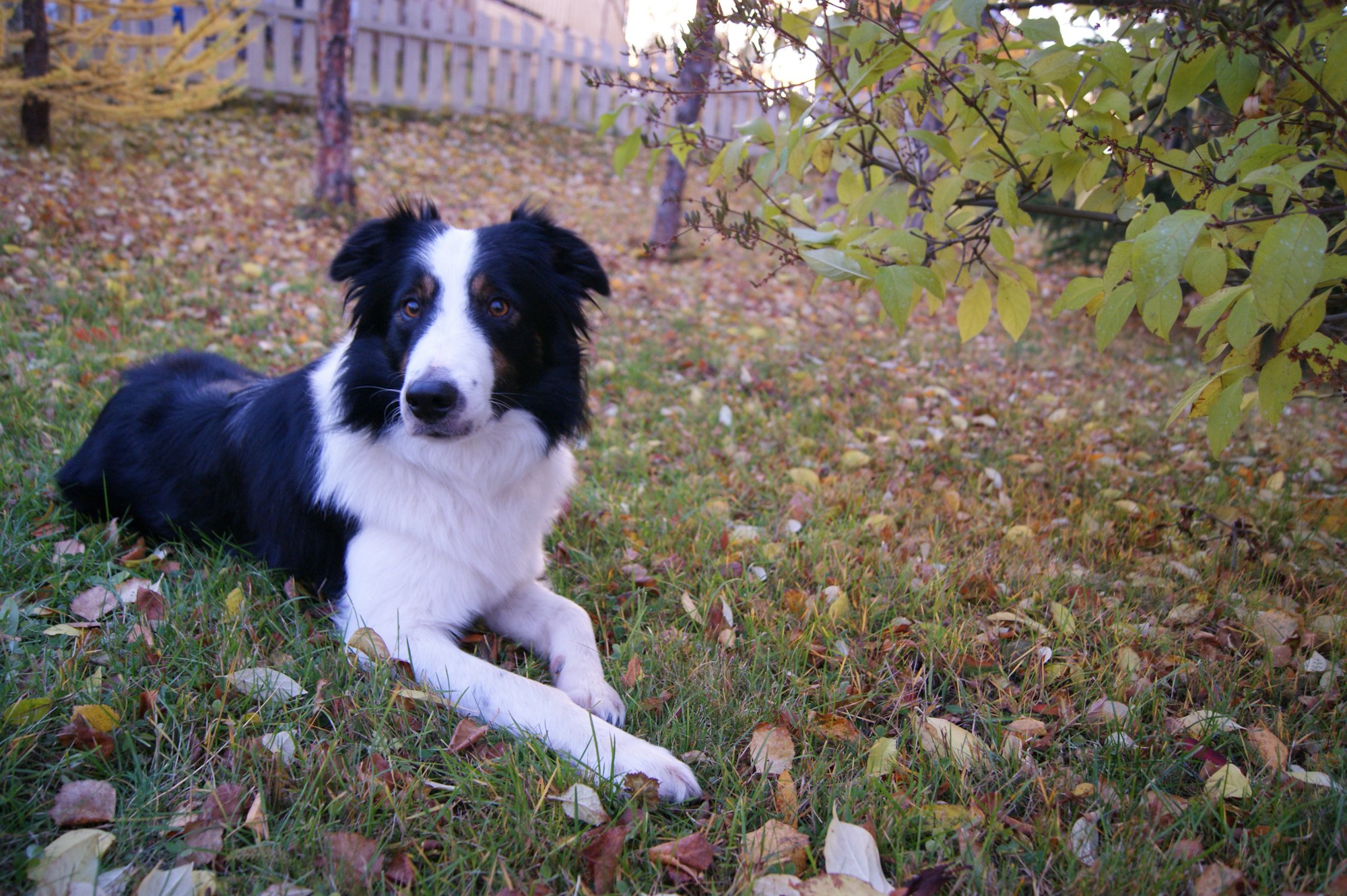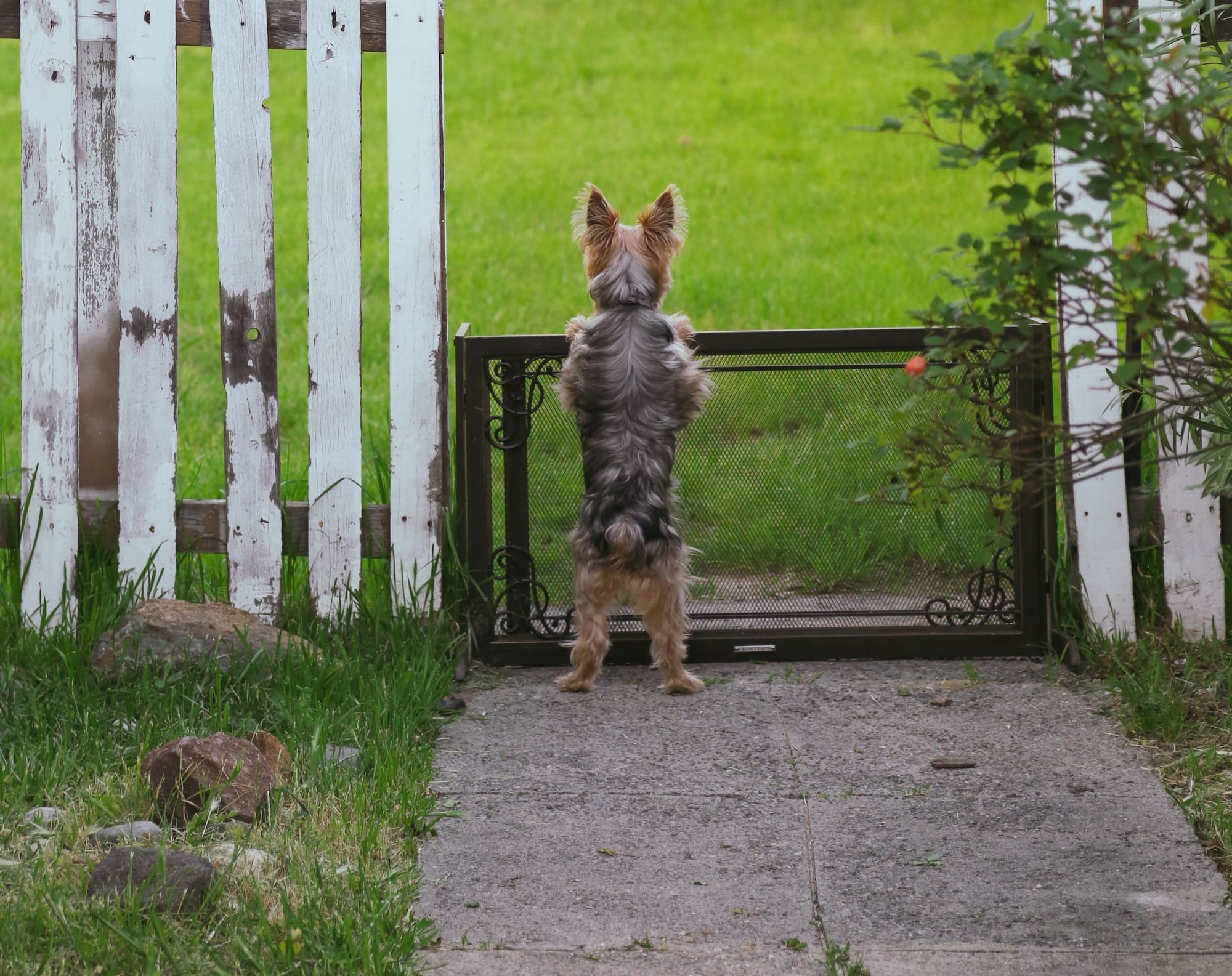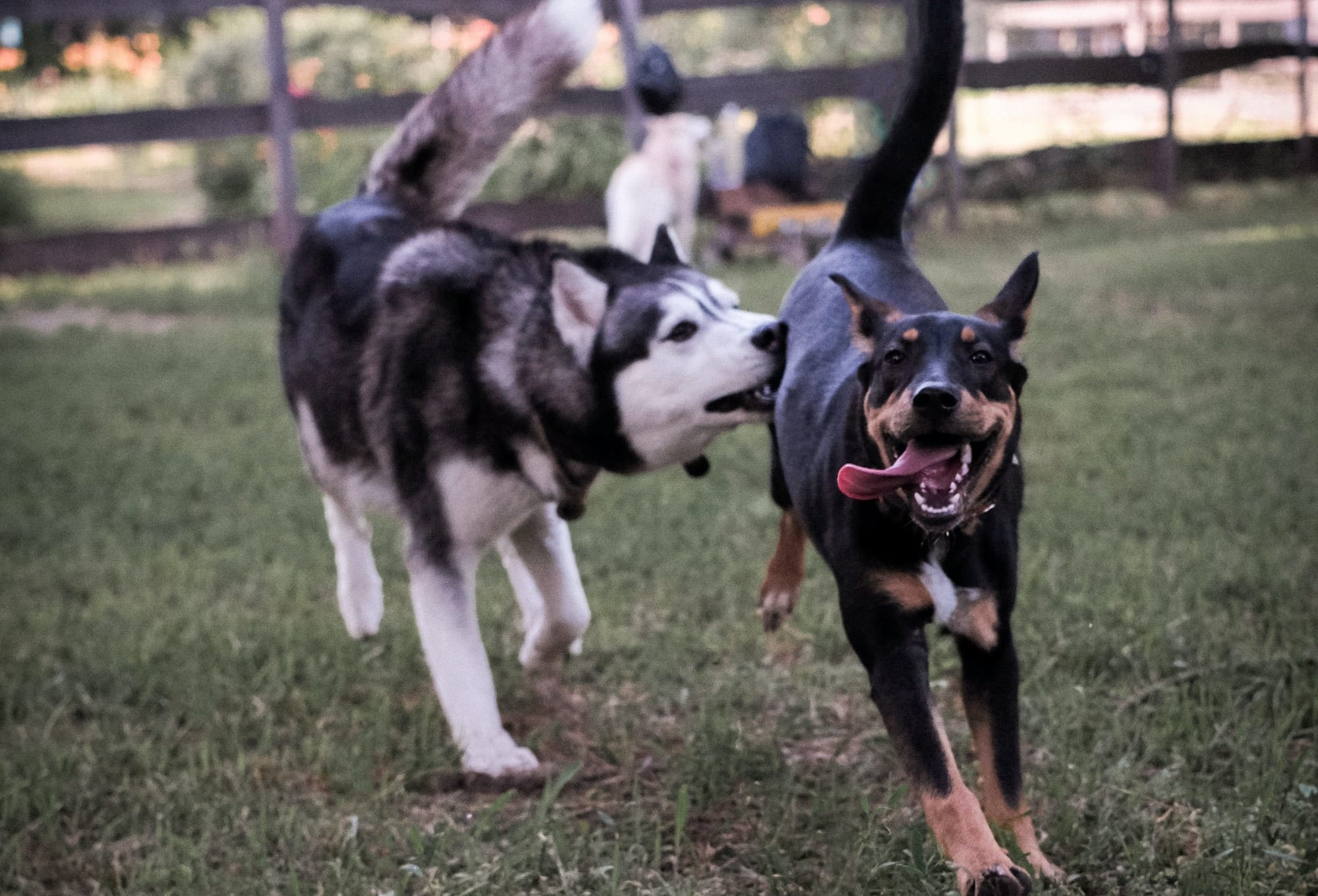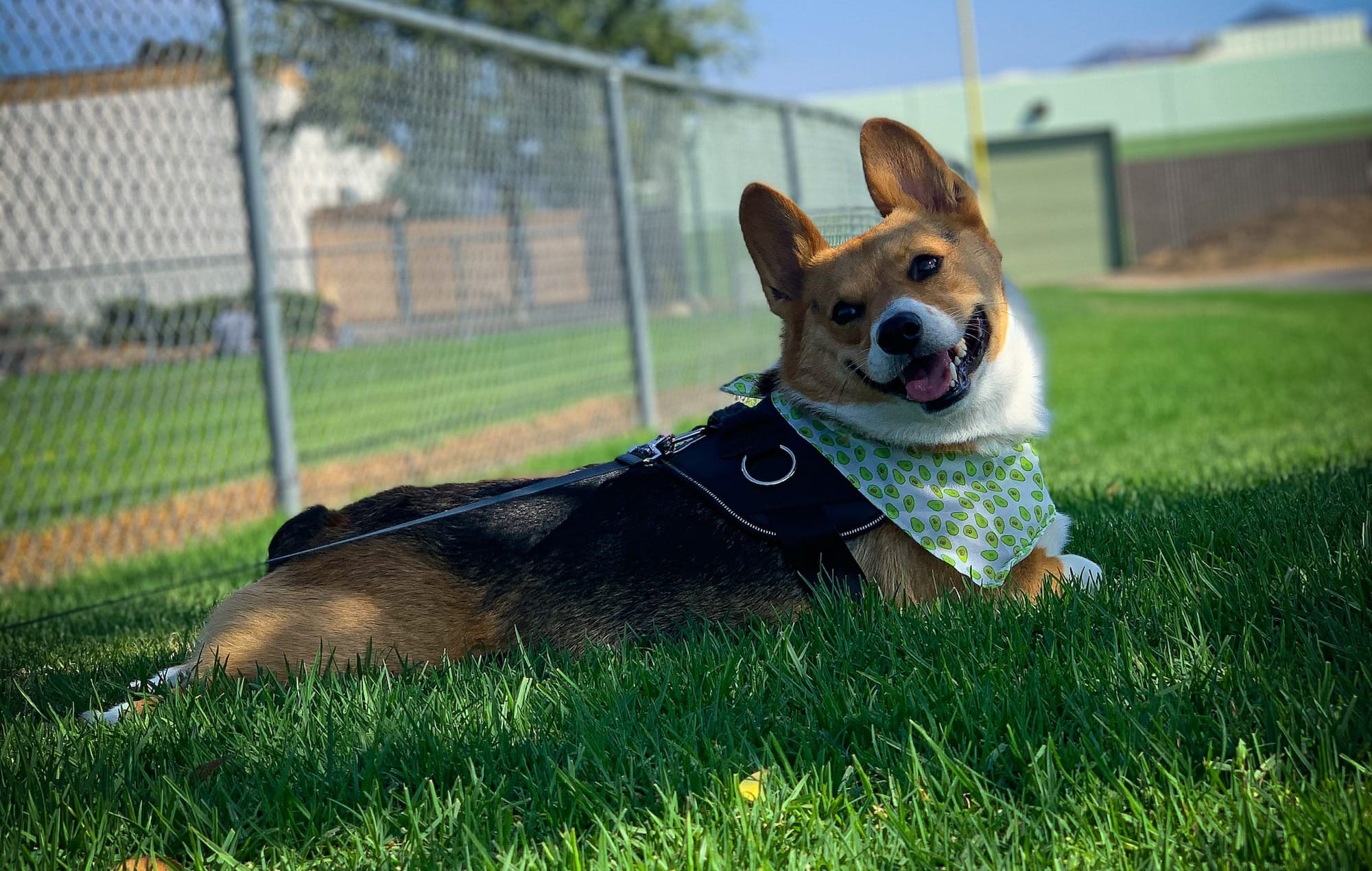As responsible dog owners, one of our primary concerns is ensuring the safety and well-being of our beloved pets. An essential aspect of this responsibility is selecting and maintaining a suitable fence for our yards. Fences serve as the first line of defense, not only to keep our dogs within the safe confines of our property but also to protect them from external threats and hazards. The right fence can provide peace of mind, knowing that our pets are secure in an environment where they can play and explore without the risks associated with wandering off.
However, determining the appropriate fence height for a dog is not always straightforward. Several common concerns arise among dog owners when it comes to fencing. Firstly, there's the worry about whether the fence is high enough to prevent the dog from jumping over. Some breeds are known for their exceptional jumping abilities, and a fence that's too low might not be an adequate barrier. Secondly, the risk of a dog climbing or finding ways to scale the fence is a valid concern, especially for agile and adventurous breeds. Finally, owners also need to consider the possibility of a dog digging under the fence, requiring attention to not just the height but the overall integrity and design of the fencing solution.
In essence, a fence for a dog is more than just a boundary; it's a crucial component of their safety and your peace of mind. This article aims to guide you through understanding your dog's specific needs, assessing your current fencing situation, and providing practical solutions to ensure that your fence is not just a boundary, but a safe haven for your furry friend.

Understanding Your Dog's Needs
When it comes to selecting the right fence for your dog, one size definitely does not fit all. Dogs come in a vast array of breeds, each with unique physical attributes and behavioral tendencies. These characteristics significantly influence the type of fencing required to ensure their safety. Here, we delve into how different dog breeds and their specific needs impact the ideal fence height and style.
Breeds and Their Jumping Capabilities
- High Jumpers: Breeds like the Greyhound, Vizsla, and Border Collie are known for their athletic abilities and high jumping skills. These breeds often require taller fences, typically around 6 feet or higher, to prevent them from leaping over.
- Climbers: Some breeds, such as the Beagle or Jack Russell Terrier, might not jump high but are skilled climbers. For these dogs, a smooth fence without horizontal bars or a fence with a coyote roller on top can prevent escape.
- Small but Agile: Smaller breeds like Chihuahuas or French Bulldogs may not pose a significant jumping risk, but they can squeeze through small gaps or under fences if not properly secured.
Size and Strength Considerations
- Large Breeds: Larger dogs like German Shepherds or Rottweilers not only potentially jump high but also can exert significant force on a fence. A sturdy, tall fence is essential to withstand their strength and size.
- Small to Medium Breeds: For smaller breeds, the fence doesn't necessarily have to be very high, but it should be secure enough to prevent them from slipping through gaps.
Personality and Behavior
- Energetic and Curious Dogs: Energetic breeds with a strong sense of curiosity, like Siberian Huskies, require secure fencing to prevent them from following scents or animals. They might attempt to dig, climb, or jump over the fence if left unattended.
- Calm and Laid-back Breeds: More relaxed breeds such as Bulldogs might do well with a standard fence height, as they are less likely to attempt escapes.
- Anxiety-Prone Dogs: For dogs that suffer from separation anxiety or are prone to panic, a solid fence that blocks the view to the outside world can help reduce stress and prevent escape attempts.
Understanding your dog's breed, size, and personality is critical in determining the right fencing solution. It’s not just about keeping them in, but also about catering to their physical and psychological needs, ensuring they feel secure and content within their environment. This awareness will guide you in creating a safe, enjoyable outdoor space that your dog will love while giving you peace of mind.

Assessing Your Current Fence
Ensuring your current fence is adequate for your dog's safety involves more than just a cursory glance. It requires a systematic approach to evaluate its effectiveness in keeping your dog contained and safe. Here’s a guide on how to properly measure your fence and identify potential escape points.
Measuring Your Fence
- Height Measurement: Use a tape measure to determine the height of your fence from the ground to the top. Ensure you measure in different areas, especially if the ground level varies around your yard.
- Gap Assessment: Check for gaps beneath the fence. Measure the distance between the bottom of the fence and the ground. Remember, even small gaps can be significant for smaller breeds or determined diggers.
- Width of Openings: If your fence has slats or links, measure the width of the openings. Ensure they are not wide enough for your dog to squeeze through.
- Overall Integrity: Inspect for loose panels, weak spots, or areas that might give way under pressure. This is crucial for owners of large or strong breeds.
Identifying Potential Escape Points
- Climbing Aids: Look for features that your dog could use to climb over the fence, like horizontal rails, nearby trees, or outdoor furniture positioned close to the fence.
- Digging Zones: Identify areas where the ground is soft or has been previously dug up by your dog. These spots are potential escape points for diggers.
- View-Inspired Jumping: Dogs might attempt to jump over fences to get to something they see on the other side. A solid fence or privacy slats can help reduce this motivation.
- Gate Security: Check the gates for secure latching mechanisms. A smart or curious dog might learn to open a poorly secured gate.
- Overhangs and Coyote Rollers: For dogs that are adept climbers or jumpers, consider adding overhangs or coyote rollers to the top of the fence to prevent them from getting over.
- Regular Maintenance Checks: Regularly walk along your fence line to check for new escape routes or potential weaknesses that might develop over time.
By thoroughly assessing your current fence and addressing any identified weaknesses, you can significantly improve the safety and security of your pet. Remember, a fence that works for one dog might not be suitable for another, so personalizing your approach based on your dog's abilities and tendencies is key.
Factors Affecting Fence Height Requirements
When it comes to securing our furry companions, understanding the various factors that influence the required height and type of fence is crucial. Dogs, with their diverse range of sizes, abilities, and behaviors, necessitate a personalized approach to fencing. This section discusses how a dog's jumping ability, climbing skills, and size impact fence height, including insights from experts and studies on recommended fence heights for different dog types.
Jumping Ability
- Breed-Specific Jumping Capabilities: Some breeds are natural high-jumpers. For instance, breeds like the Whippet or Border Collie can easily clear fences that are 4-5 feet tall. Experts recommend a minimum of 6 feet tall fences for these breeds.
- Training and Behavior: A dog's training and past behavior can also impact its likelihood to jump over a fence. A well-trained dog might be less inclined to jump, while a dog with a history of escaping might require a taller barrier.
Climbing Skills
- Climbing Breeds: Certain breeds, such as the Catahoula Leopard Dog or the American Pit Bull Terrier, are known for their climbing abilities. In such cases, a smooth fence without footholds or additional deterrents like rollers or overhangs are recommended.
- Environmental Factors: The presence of objects near the fence that can aid in climbing, like trash cans or trees, should be considered. Removing these aids or installing angled fence toppers can be effective.
Size Considerations
- Large Breeds: Large dogs can exert more force on a fence and often require both taller and sturdier fences. A minimum height of 5-6 feet is often suggested by experts for large breeds.
- Small to Medium Breeds: While smaller dogs may not require as tall a fence, it’s important to ensure no gaps or weak points exist that they could exploit.
Expert Opinions and Studies
- Veterinary Recommendations: Veterinarians often suggest considering both the physical and psychological needs of the dog. A fence that is too restrictive can lead to frustration and behavioral issues.
- Animal Behaviorist Insights: Behaviorists note that a visual barrier can sometimes be more effective than just a physical one. Dogs that can't see the other side are less likely to attempt to jump over.
- Safety Studies: Research on pet safety indicates that the height of the fence should not only prevent escape but also protect the dog from external threats like predators or overly curious passersby.
The ideal fence height and style depend on a multifaceted understanding of your dog's unique characteristics and needs. By considering these factors and seeking expert advice, you can create a safe and secure environment that allows your dog to enjoy the outdoors without the risk of escape or harm.

Safety Concerns and Legal Requirements
When it comes to fencing for dogs, the stakes extend beyond mere containment. Inadequate fencing can lead to a myriad of safety concerns, and there are also legal requirements and guidelines to consider. This section highlights these crucial aspects to help dog owners understand the broader implications of their fencing decisions.
Safety Concerns
- Risk of Escape and Lost Pets: Inadequate fencing height or structural weaknesses can lead to dogs escaping, increasing the risk of them getting lost or injured. This is especially critical for dogs that are curious, have high prey drives, or are prone to wanderlust.
- Traffic Hazards: Dogs that escape are at a high risk of encountering traffic. This can lead to accidents causing injury or worse, not only to the pet but potentially to drivers and pedestrians.
- Interaction with Wildlife and Stray Animals: In areas with wildlife or stray animals, an unsuitable fence can expose pets to dangerous encounters. This includes the risk of injury from fights or transmission of diseases.
- Human Interaction Risks: Dogs that escape can come into contact with people who may not be comfortable with dogs, leading to stressful or dangerous situations. There's also a risk of theft for certain breeds.
- Chemical and Environmental Hazards: Dogs roaming outside unsupervised can ingest toxic substances or get into harmful materials, which could be life-threatening.
Legal Requirements and Guidelines
- Local Regulations: Many municipalities have specific regulations regarding fence heights and types for pet owners. It's important to check with local authorities to ensure compliance.
- Homeowner's Association Rules: For those living in communities with a homeowner's association (HOA), there may be additional rules about the type of fences allowed, their height, and appearance.
- Liability Laws: In many places, dog owners are legally responsible for any harm or damage caused by their pet. If a dog escapes due to inadequate fencing and causes an accident or injures someone, the owner could be liable.
- Animal Welfare Laws: Some jurisdictions have laws that pertain to the adequate confinement and care of pets. Neglecting to provide a safe, escape-proof environment could be seen as a violation of these laws.
- Guidelines for Specific Breeds: Certain areas may have breed-specific legislation that includes specific fencing requirements. This is often the case for breeds that are perceived as more dangerous or powerful.
In summary, ensuring that your fence meets both safety and legal standards is not just about preventing your dog from escaping; it's about protecting them from a range of external dangers and fulfilling your legal responsibilities as a pet owner. By understanding and adhering to these considerations, you can provide a safe, secure, and legally compliant environment for your dog.
Choosing the Right Fence for a New Installation
Selecting the right fence for your dog involves a careful balance between aesthetics, cost, and functionality. It's crucial to choose a fence that not only looks good and fits within your budget but also effectively keeps your dog safe and secure. Here's a guide to help you navigate the choices available for fence materials and styles, along with advice on achieving the right balance.
Fence Materials
- Wood Fences: Wooden fences offer a classic look and good privacy. They can be customized to various heights and designs but require regular maintenance to prevent rot and wear.
- Chain Link Fences: These are affordable and durable options. Chain link fences provide good visibility, which is important for social dogs, but they may not be the best for jumpers or climbers.
- Vinyl Fences: Vinyl fencing is low maintenance and comes in various styles. It's a good choice for dog owners looking for a blend of aesthetics and functionality.
- Metal Fences: Wrought iron or aluminum fences offer durability and elegance. However, ensure the gaps between bars are not wide enough for your dog to slip through.
- Composite Fences: Made from a blend of wood and plastic, composite fencing offers the look of wood but with less maintenance. It's a durable and aesthetically pleasing option.
Fence Styles
- Privacy Fences: These are typically tall with no gaps, ideal for dogs that are reactive to external stimuli. They provide a secure and private environment.
- Picket Fences: A picket fence can be suitable for smaller, less active dogs. Ensure the gaps between the pickets are narrow enough to prevent your dog from squeezing through.
- Split-Rail Fences with Wire Mesh: This style maintains a rustic look while the added wire mesh prevents your dog from escaping through gaps.

Balancing Aesthetics, Cost, and Functionality
- Aesthetic Considerations: Choose a fence style that complements your house and landscape. Remember, the fence is a significant part of your home’s curb appeal.
- Cost Effectiveness: Balance your budget with the quality of materials. Cheaper materials might save money initially but could cost more in the long run due to maintenance and potential replacements.
- Functionality for Your Dog: Consider your dog’s size, behavior, and needs. A higher fence might be necessary for jumpers, while a solid fence could be better for dogs prone to barking at outside stimuli.
- Longevity and Maintenance: Evaluate the lifespan and maintenance requirements of different materials. A slightly more expensive fence that is durable and low-maintenance might be more cost-effective over time.
- Professional Advice: Consult with a fencing professional who can provide insights specific to your needs and local regulations.
Choosing the right fence for your dog is a decision that impacts not only the safety and well-being of your pet but also the overall look and value of your property. By considering the various materials and styles, and balancing them with your needs and budget, you can select a fence that meets all your criteria.
Importance and Advantages Over Traditional Fencing
Fi Dog Collars represent a modern, technology-driven solution for dog owners, offering an innovative approach to pet safety and management. These collars are more than just a traditional pet accessory; they combine GPS tracking, activity monitoring, and smart connectivity features. Here, we explore the importance of Fi Dog Collars and how they can offer advantages over traditional fencing systems.
Importance of Fi Dog Collars
- Real-Time GPS Tracking: One of the most significant features of Fi Dog Collars is the ability to track your dog's location in real-time. This is invaluable if your dog manages to escape or gets lost, providing peace of mind to the owner.
- Activity Monitoring: These collars also monitor your dog's activity levels, helping ensure they are getting enough exercise for their age, breed, and size. This can be a vital tool in managing your dog's health and well-being.
- Escape Alerts: The collar can send instant alerts to your smartphone if your dog leaves a designated safe area, such as your home or yard, allowing for a quick response.
- Durability and Water Resistance: Designed for the active dog, Fi Collars are built to withstand rough play and are water-resistant, making them suitable for all weather conditions and terrains.
- Long Battery Life: With a battery life that can last several weeks on a single charge, these collars reduce the worry of frequent recharging.
Advantages Over Traditional Fencing
- Flexibility and Portability: Unlike fixed fencing, Fi Dog Collars offer flexibility. Whether you’re traveling, moving homes, or visiting new places, your dog’s safety system moves with them.
- Coverage Beyond Physical Boundaries: Traditional fences have physical limits and can fail (e.g., gates left open, dogs digging under fences). Fi Collars provide a layer of security that extends beyond these physical boundaries.
- Cost-Effective in Certain Situations: For those living in rental properties or places where building a fence isn’t feasible, Fi Collars can be a cost-effective alternative.
- Behavioral Insights: Beyond safety, these collars provide insights into your dog’s behavior and health, something traditional fencing cannot offer.
- Peace of Mind in Open Spaces: For dog owners who enjoy off-leash activities with their pets in open spaces, a Fi Collar can provide peace of mind, knowing they can locate their dog quickly if needed.
While Fi Dog Collars offer significant benefits and can be an excellent tool for pet safety, they should be considered as a supplement to, rather than a replacement for, traditional fencing in many situations. Fences provide a physical barrier that collars cannot, which is crucial for preventing potential confrontations with other animals or people, and for protecting your dog from other external risks. The combination of a reliable fence and a Fi Dog Collar can provide the most comprehensive safety solution for your beloved pet.
Conclusion
In summary, ensuring the safety and well-being of your dog requires a thoughtful approach to their environment, particularly in terms of fencing and containment solutions. Throughout this article, we've explored various aspects crucial to making informed decisions – from understanding your dog's specific needs based on their breed, size, and personality, to assessing and enhancing your current fence, and considering the legal and safety implications of inadequate fencing.
We've also delved into the importance of choosing the right materials and styles for new fence installations, balancing aesthetics, functionality, and cost. Moreover, the introduction of innovative technologies like Fi Dog Collars highlights the evolving landscape of pet safety, offering new tools that can supplement traditional methods like fencing.
Remember, each dog is unique, and what works for one may not work for another. It's about finding a combination of solutions – be it a well-structured fence, a technologically advanced collar, or a blend of both – that best suits your dog's tendencies and your specific circumstances.
Ultimately, the goal is to create a safe, secure, and happy environment for your furry family member. By doing so, you not only protect them from external dangers but also provide a space where they can thrive and enjoy a high quality of life. Whether it's through traditional fencing, technological aids, or a combination of both, the peace of mind that comes with knowing your dog is safe is invaluable.




